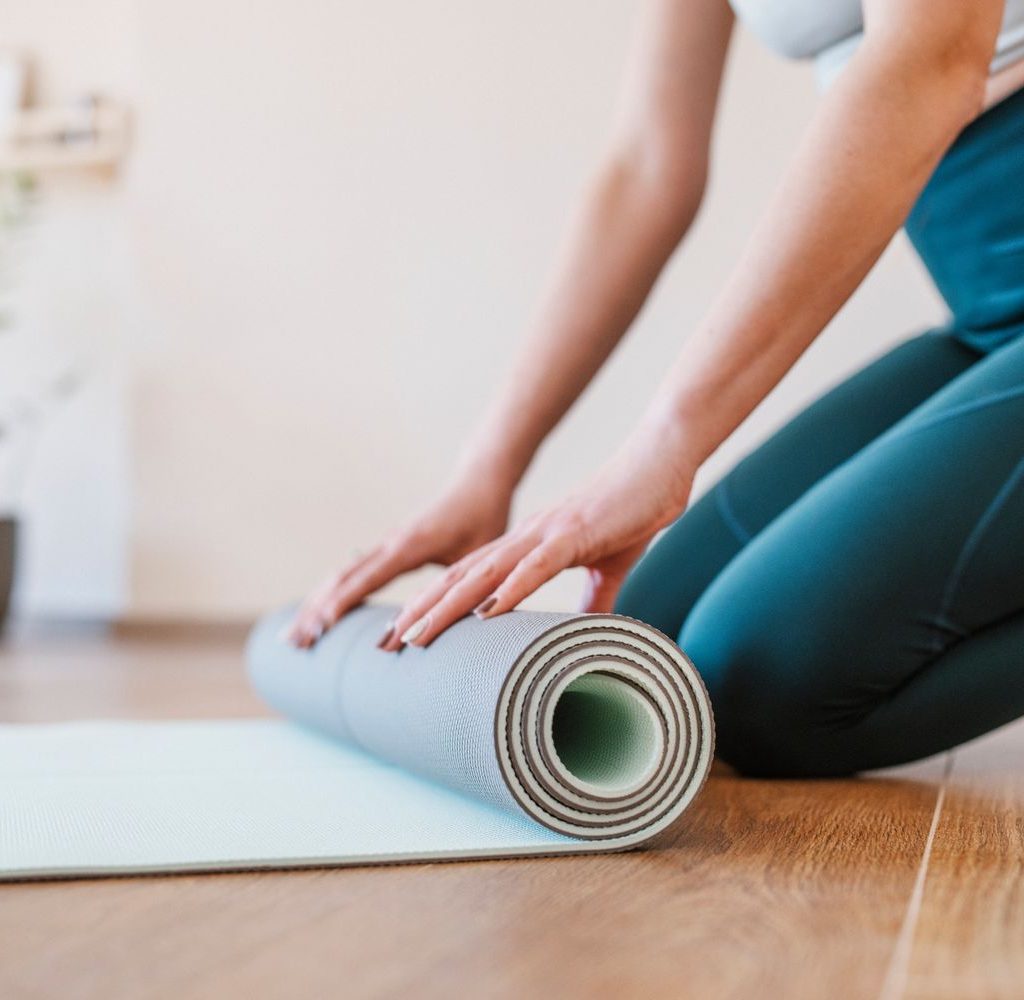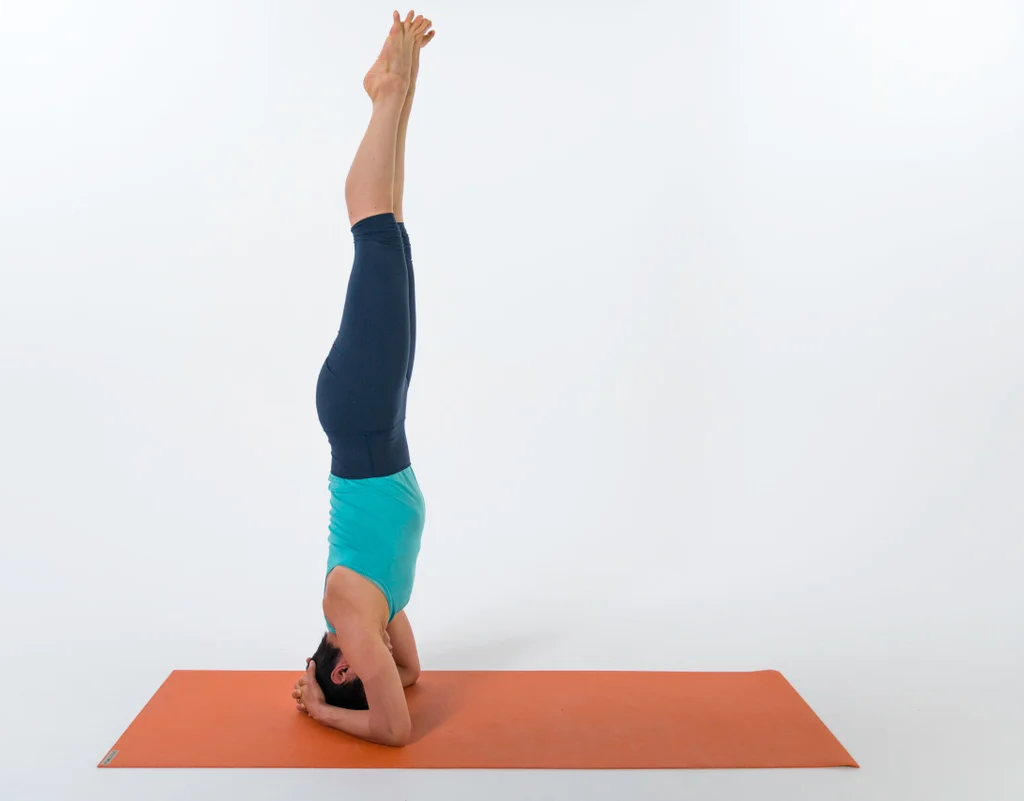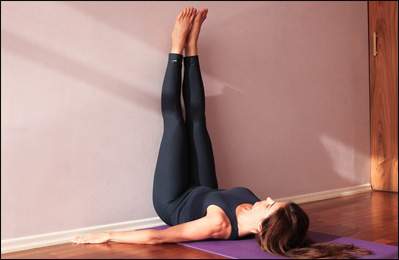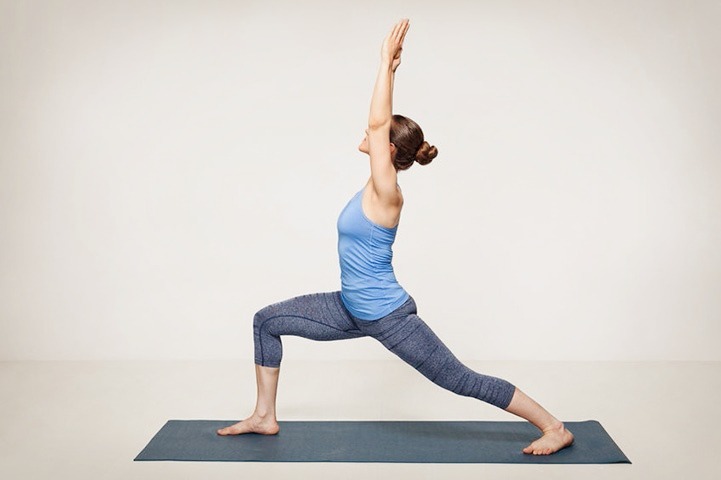Halasana (hah-LAHS-ah-nah)
hala = plow
Plow Pose is a yoga posture that involves inverting the body and stretching the back and the shoulders, aiding in invigorating the nervous system.
It has a calming effect on the nerves, the brain, and the heart, which is why it is customarily done at the end of a yoga session to help the individual transition into Corpse Pose (Savasana) and meditation.
Here is a comprehensive guide to the powerful yoga pose:

A step-by-step guide to doing the Plow Pose

So, here you go! Here is the step-by-step guide to performing this pose:
- Lay on your back with your arms stretched out by your side, palms facing the floor.
- As you inhale, use the abdominal muscles to raise your feet up, bringing your legs to a 90-degree angle with the floor.
- Keep breathing normally and use your hands to support your hips and back, then raise them off the ground.
- Your legs should then arch over your head until your toes touch the ground, and your spine should be straight up. At first, this may be tough, but give it a shot for a couple of seconds.
- Maintain the pose and let your body become more and more relaxed with each calm breath.
- After around a minute (newbies can take a few seconds) of staying in this posture, gently lower your legs down while exhaling.
You can find out a detailed guide on the right way to do this pose here:
Tips for doing it right

Here are some important tips that will help you master the posture:
- When starting out with Halasana yoga, novices must obtain the guidance of a professional instructor to prevent injuries.
- As the asana puts a lot of pressure on the spine, it is important to take your time and start out slowly.
- Do not push yourself too far or do too many repetitions as this can lead to harm.
- Additionally, putting folded blankets under your shoulders and a pillow under your hips can help support your neck and upper body.
- Furthermore, when carrying out Halasana for beginners, it is essential that you do not jerk your body.
- To further increase the advantages of the pose, it is recommended to follow it with Bhujangasana (Cobra Pose).
Counter poses
Any posture that involves bending backward can be used as a complementary pose to halasana.
Matsyasana
This pose stretches the deep hip flexors (psoas) and the muscles (intercostals) between the ribs.
Ushtrasana (camel pose)
It relieves the tightness in the neck and throat by extending the neck in the opposite direction.
Similar poses to the Plow pose
If you are looking for a pose that offers similar benefits as plow pose, here you go 👇🏻
- Seated Forward Bend
The plow pose requires you to extend your lower back, glutes, and legs by moving them up and over your skull. Similarly, Seated Forward Bend will stretch the back of your body in a comparable way.
Key benefits
Here are some of the benefits of doing this pose:
- Enhances the power and firmness of back muscles and the spinal column when bent, as well as the leg and abdominal muscles.
- Enhances the performance of the spinal nerves by creating pressure on the nerves in the neck area that are usually of the sympathetic type, thereby augmenting the performance of the sympathetic nervous system.
- Strengthens the functioning of the thyroid, parathyroid, adrenal and pituitary glands. All the other endocrine glands are regulated by these chief glands and so the entire operation of the endocrine system is advanced.
- Enhances blood flow
- Enhances the digestive system, which makes this pose beneficial for those who have difficulties with constipation and stomach issues.

Contraindication
It is advisable to be careful when doing any physical activity or meditation. When doing plow pose, these people should take precautions:
- Those suffering from back problems or slipped disc
- Pregnant women or women during their menstruation time should avoid Halasana.
- Those with an enlarged thyroid, spleen, or liver, as a lot of strain is put on the lower belly
- Those with high blood pressure issues
- Those with weak blood vessels in the eyes, serious headaches such as migraines, high blood pressure, and sciatica problems, and those with feeble digestion should avoid it.
Conclusion
Halasana is a calming posture that gives your spine and back muscles a substantial stretch.
This pose can be done alone, as part of a brief sequence, or as part of a longer practice. Even though Halasana is reasonably challenging, you can make adjustments to make it suitable for your needs.
Share with your friends and family to encourage them to do this helpful yoga pose.
Happy Yogaing



